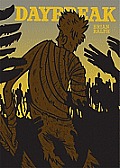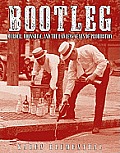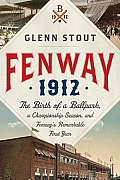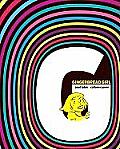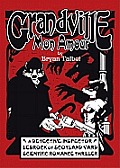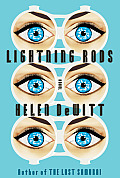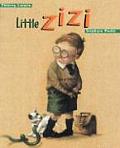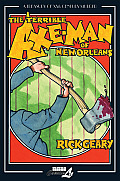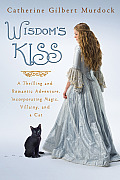Link to this review in the form of a comic strip by guest tagged horror • graphic novel
Link to this review by flemtastic tagged history
In the early 1900’s, momentum began building for a solution to the proliferation of saloons and dens of iniquity that had sprung up around workplaces and downtowns across the U.S. Churches railed against drinking alcohol, and temperance societies tied drunkenness to social ills. Because of political infighting, the advent of WWI, and a very active printing press that published political cartoons and campaign posters, America officially went dry. Prohibition was supposed to end poverty, empty hospitals, increase productivity and restore families, but there were none of the promised benefits. All sorts of complications quickly became evident. In addition to average citizens flouting the law, prohibition-related violence broke out (the most famous incident being the Saint Valentine’s Day massacre) as rival gangs tried to meet the demand for liquor and do away with the competition.
Why I picked it up: Many people comparing the drug war to Prohibition. I thought I should understand Prohibition more, so that I could put together a coherent argument about the legalization of marijuana.
Why I finished it: Blumenthal shows how the politics of the day (heavily influenced by religious groups), the wartime need for food ingredients, and the culmination of years of careful placement of dry candidates in important positions paid off all at once. There were also great details about vehement prohibitionists like Henry Ford, who sent liquor enforcement squads to his employees’ houses to see if they were drinking.
I’d give it to: My good friend Jeff, a libertarian who would enjoy watching big government fail in policing people’s personal lives.
Link to this review by flemtastic tagged history • nonfiction
This exhaustively researched book explores the planning and building of Boston’s Fenway Park, one of the most beloved ballparks of all time, as well as the success of the 1912 Red Sox. Stout explains that the park’s quirky measurements are a result of management’s interest in money trumping everything else. Despite infighting and an injured star pitcher, the team made it to the Series, igniting Red Sox mania. The owners wanted to capitalize on the surge in popularity so they built several new, rickety grandstands (even infringing on the field in places) to earn more from ticket sales.
Why I picked it up: I visited Fenway Park last winter and sat in the seats at the top of the Green Monster, so I was looking forward to reading about its history and early years. On the tour, the guide explained that Fenway Park was about to be named a National Historic Landmark to preserve the park and limit future changes.
Why I finished it: The details about the early years of the park and the team were hard to believe. Overflow fans got to stand inside the field, ten deep, up against the wall. The 1912 Red Sox pitchers often pitched every two days with no relief pitchers. There was also a 300 man group of faithful fans, the Royal Rooters, who traveled with the team and sang the song “Tessie” all game long to annoy other teams. (The song is from a broadway musical and is about a lady singing to her parakeet.)
I’d give it to: My friend Derek, a baseball fan who hates the Sox but would love the stories about when Ty Cobb’s team played Fenway and Christy Mathewson pitched against the Sox.
Link to this review by sarahhunt tagged literary • graphic novel • romance • coming of age
Annah Billips introduces herself and starts the story. She’s a tease, and she’s made two dates for the night. She’ll go out with whoever shows up at her apartment first — Chili, a girl, or Jerry, a guy. But as her dates arrive and walk through Portland, Oregon, we find out more about Annah than she wants to tell. She thinks that when she was a child, in the midst of her parents’ divorce, her father removed part of her brain to create a twin who feels all of her emotions and sensations. And that sister is now missing.
Why I picked it up: I love Colleen Coover’s female characters. They’re cute and full of fun.
Why I finished it: Annah’s lovers, a fake fortuneteller who can really read minds, an observant pigeon, a passing thief, and a charming bulldog add bits of what they know about her. As Annah’s story comes out, the whole becomes darker and darker. I wondered if something bizarre had happened in her life or if she was creating a story to cover up some deeper hurt.
I’d give it to: Mike, because of Chili’s bittersweet realization that she loves Annah even if she knows it can’t last and that she will never truly understand her. He’ll also love that the Portland in the book is utterly realistic and recognizable.
Link to this review by geneambaum tagged science fiction • mystery • fantasy • graphic novel
Scotland Yard’s Detective Inspector LeBrock and his colleague Roderick hunts down prison escapee Mad Dog Mastock, whose brutality as a Resistance fighter against the French occupation was well-known. When Mastock flees to France and starts murdering prostitutes, LeBrock discovers the killings may be motivated by blackmail.
Why I picked it up: Loved the previous volume in the series, Grandville.
Why I finished it: There was enough bloody violence in the opening death row prison break to convince me I had to read it. The mad dog LeBrock is hunting looks truly insane.
I was also hoping for a cameo from another anthropomorphic universe. In the previous volume it was Tin Tin’s dog, Snowy. I won’t spoil the surprise about who appears here, but I will say it was delightful to see this Disney character down on his luck in a drunk tank.
I’d give it to: Tim, who liked Jedediah Berry’s excellent and surreal novel, The Manual of Detection. This isn’t as weird a story, but the steampunk setting, plus the fact that LeBrock is a large badger, make me feel like they have something in common.
Link to this review by billba tagged literary • humor
Joe is the world’s greatest salesman. He’s sure of it. He just hasn’t, you know, sold anything yet. Then one day he figures out a bold solution to the difficult problem of sexual harassment in the workplace: hire female temp workers to satisfy their male coworkers’ needs. Amazingly, he sells it.
Why I picked it up: Joe’s solution sounds like somebody’s weird fantasy (it is — it’s his), and I was ready to pass. Then I saw it was written by DeWitt (The Last Samurai), so I decided to give it a shot.
Why I finished it: The characters are sympathetic and kind of hysterical, especially the African-American woman who puts the Equal Employment Opportunities Act to the most awesome use ever. Joe spins such a compelling story about his ever-evolving product that it all started to feel disturbingly plausible.
I’d give it to: Jenn, who is both crass enough to read this novel to the end, and grounded enough in science to give me her perspective. (I have a feeling it won’t seem so plausible by the time she’s done.)
Link to this review by geneambaum tagged coming of age • picture book
In the school locker room, the other little boys begin teasing Martin about what a little zizi he has. He worries when they say he won’t be able to make babies because he likes Anais, and she wants to have ten kids when she grows up.
Why I picked it up: I was telling Cinco publisher Lee Merrill Byrd how much I enjoyed The Long Journey of Mr. Poop when she said the magic words, “Have you seen the book about pee?”
Why I finished it: How could I put down a picture book about a kid worried about the size of his unit? My favorite part is when one of the boys proposes a contest. Whoever pees the farthest gets Anais (because she won’t choose a boyfriend). Martin practices peeing in his garden until he’s convinced he’ll be the champion.
I’d give it to: My great-aunt, Gin, who used to have a picture of a woman peeing at a urinal (amidst several startled men using the same facilities) in her laundry room.
Link to this review by geneambaum tagged graphic novel • nonfiction • mystery
The Axe-Man of New Orleans killed six people and wounded six others in a spree during 1918 and 1919. Most of those attacked were grocers or those living behind a corner grocery store. Many were Italian immigrants. Ten of them were attacked with their own axes.
Why I picked it up: New Orleans always makes me uneasy. Before ALA Annual this year, I decided to amp that up.
Why I finished it: The brief overview of the history of the city, which opens the book, made it worth reading by itself. But then the blood-soaked scene of the first murder, where the two victims seem to be missing most of their heads, really got me. (Geary’s art is black and white, making the solid black of the blood stand out against the textures he created with his exquisite, old-school inking style.)
I’d give it to: Bill’s sister Robin, with whom we stayed in the Crescent City, in the hopes that it will make her a little more security conscious. (Though I am willing to admit that she may have a better sense of her neighborhood than I do.)
Link to this review by danritchie tagged fantasy
In the imaginary medieval Empire of Lax, a princess (Wisdom), a circus acrobat (Tips), his childhood sweetheart (Trudy) and a cat each take different paths to Farina. There, the evil Duchess Wilhelmina plots to gain control of the Kingdom of Montagne by wedding her son to Wisdom. With the help of the Queen Mother and a little magic they try to save the kingdom.
Why I picked it up: The subtitle caught my eye. With so many fairy tale retellings on the market, this sounded original — and it was.
Why I finished it: The quirky place names, like the village of Froglock whose name derived from the croaking frogs that awaken residents when anyone tries to cross the Daft Toll Bridge without paying. I was also enthralled by the way Murdock tells the story from eight points of view and inventively uses diaries, letters, a journal, a script, and encyclopedia entries.
I’d give it to: Kristi and Katherine, who devoured all the fairy tales by Margaret Peterson Haddix, Gail Carson Levine, and Donna Jo Napoli.
